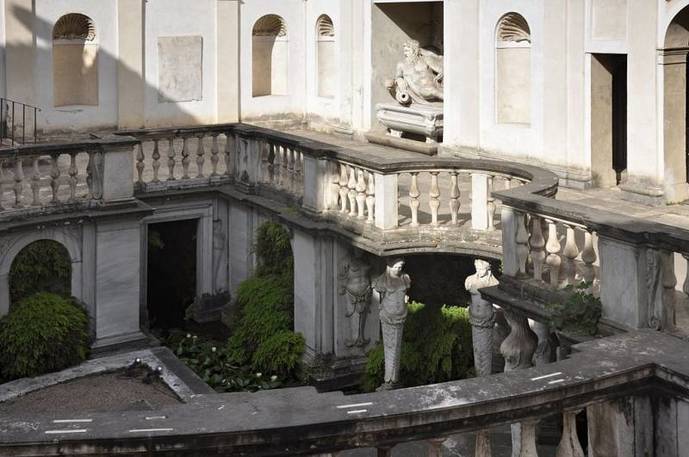


The marvelous 16th-century Villa Giulia has been restored by a group of secret benefactors from Japan. In 2014, after having attended a special concert and made a visit to Villa Giulia the Japanese entrepreneurs they offered to fund the restoration.
The benefactors gave about 25,000 euros for the restoration of the “small miracle” that was ordered to be built by Pope Julius III that now houses the Museo Nazionale Etrusco. Kavalik Consortium began working on the project in September of 2015 and has now finished bringing the magical destination back to its former beauty. The mysterious group of funders denied to even be thanked at the official inauguration.
Some of the most important artists of the time participated in the construction and design of Villa Giulia, which began in 1550 and was completed in 1555. Villa Giulia has attracted some of Italy’s most famous individuals, including Giorgio Vasari, Michelangelo, and other intellectuals of the period.
Recent visitors have been struck by the newly restored nymphaeum, the heart of the famous gardens that has a fountain designed and sculpted by Vazari and Bartolomeo Ammannati, caryatids holding up the Travertine marble balcony, and a mosaic dedicated to Triton.
Antonio Giglio, a restorer who worked alongside Alessandro Ferradini and Kristian Schneider, said, “The most difficult battle was against the vegetation. On one hand, we had to eliminate the algae with powerful biocides so that they would not grow back, while on the other hand, we wanted to save the plants in the niches.”
The nymphaeum had turned grey and become covered in moss and mold and also had structural problems, especially with the beautiful mosaic. This masterpiece from the Roman era that may have been part of a larger floor of a thermal building, had begun to lose its millennia-old black-and-white tiles due to the deterioration of structural support.
"We had been used to seeing the nymphaeum entirely of one color, since the floor had become black," said Alfonsina Russo, superintendent for archaeology, architecture and, landscape of the metropolitan area of Rome, Viterbo, and southern Etruria. "But one elderly employee spoke about it having had colors and some of the ancient drawings created doubts.”
After several deep cleanings, a wide range of colors emerged from the whiteness of the eight caryatids in the mosaic. The caryatids, Giglio noted, “Are not all the same. We had seen them as very serious, but the four in the second row are clearly laughing."
While art historians may know the true reason, Giglio believes that "they symbolize the dualism between tragedy and comedy in classical art.” Giglio’s hypothesis is fitting because the nymphaeum was originally created as a “theater of water” for actors and musicians.
Source URL: http://test.casaitaliananyu.org/magazine/focus/art-culture/article/villa-giulia-returns-its-former-glory
Links
[1] http://test.casaitaliananyu.org/files/villagiuliarestoreditalyrome1469117250jpg